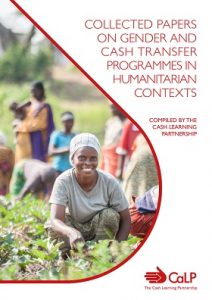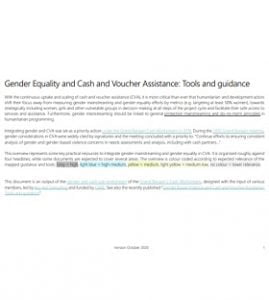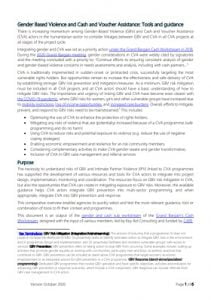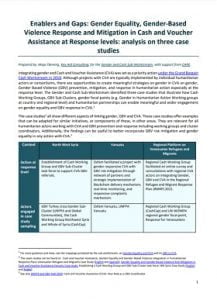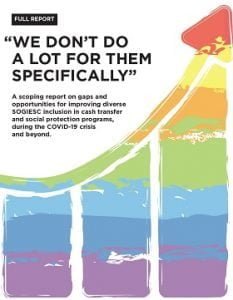#GenderCash: Are we making enough progress?
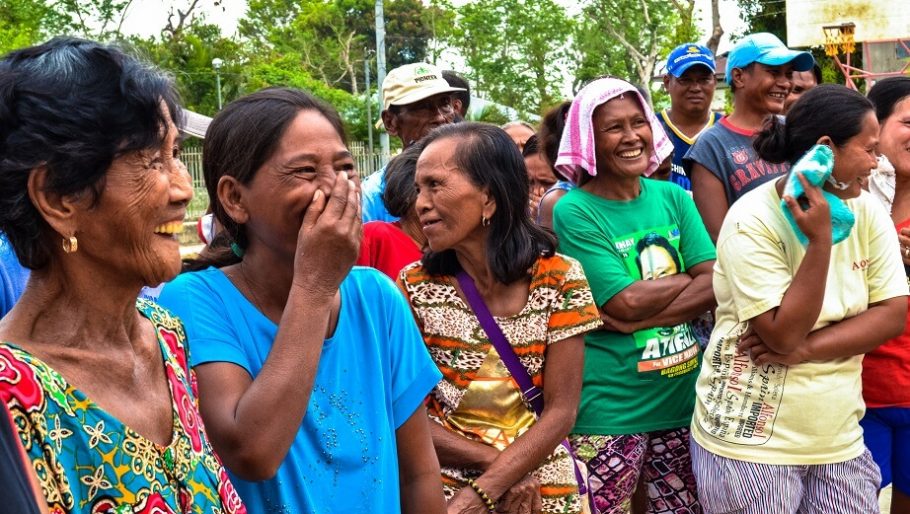
Before taking stock of the last four years of #GenderCash I’ll start by asking you a few questions. Your answers will serve as a quick litmus test to assess if you think your organization is where it needs to be on this issue.
- On a scale of 1-10, where would you put your organisation’s understanding of gender in relation to cash and voucher assistance (CVA) programming?
- Does your organisation conflate issues: gender and women? Or protection and gender?
- Which guidance does your organisation routinely use on gender and cash programming?
- Does your organisation routinely undertake gender assessments or work with others to improve response wide understanding of issues?
- Does your organization systematically assess risks related to gender-based violence and CVA and mitigate them?
- How much has your organisations’ programming changed in the last few years?
How did you do? Perhaps your answers were reassuring and re-confirmed that your organisation is taking the right path. Or perhaps they acted as a reminder of what more still needs to be done.
With those thoughts in mind, let’s take a quick look down memory lane.
From small beginnings a movement grows
Four years ago, reflecting on the limited thinking about bringing gender
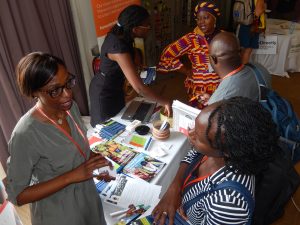
sensitivity or responsiveness in cash-based responses, we took stock and realised that evidence was sparse and discussion limited. Cutting a long story short, after a call for papers, we held a symposium with a diverse range of speakers sharing their experiences on a healthy array of #gendercash subjects.
After an electric day of discussions, we agreed a six point Agenda for Collective Action to:
- Commit to action
- Fill the evidence gaps
- Ensure assessments consider gender adequately
- Design programmes for equality
- Systematically monitor and respond to protection issues
- Build capacity and work together
As a first step, we published a Collection of Papers and then a few months later, suggesting we were on the right track, in June 2018, the Grand Bargain cash workstream picked up the issue. Led by CARE and UN Women a new sub-workstream on #gendercash took off, harnessed momentum and drove things forward. These steps unlocked a phase of greater awareness in the timeline of gender and cash thinking.
So where are we now?
While change in the humanitarian sector often feels slow, in the area of #gendercash there has been a lot of headway over the last four years.
Awareness and interest have grown. While there is far more understanding on some issues than others, we now have a wealth of information and resources in multiple languages on gender and CVA. Indeed, gender-related resources are among the
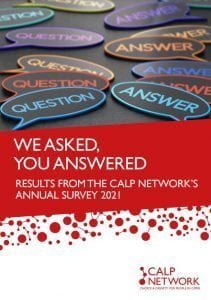
most frequently downloaded from the CALP website and from CALP’s annual survey we learn that research and evidence on gender was among the top ten thematic areas used by survey respondents in 2020.
This is all good, solid progress.
But how much of this awareness and understanding is translating into practical action? There has definitely been progress, with many people asking more questions than before and analysis resulting in action in some cases.
But, as many people will have found when they answered the 6 questions at the start of this blog, there is still a long way to go.
So as we celebrate progress, we should not get complacent. The progress being made is uneven and analysis is often superficial. More needs to be done, and done consistently across all organizations, if we are to address risks, harness opportunities and develop even stronger programmes.
Fortunately, great resources exist.
Six top reads to help take us further and faster
The one pager Agenda for Collective Action (2018) remains highly relevant, with 6 action points that can be used by agencies individually as well as collectively.
Drawing on collective evidence and experience, here are some top reads to continue the #gendercash journey:
1.
While its’4 years old, this collection of papers on Gender and CashTransfer Programmes in Humanitarian Contexts (2018) still has lots of great information spanning many issues – from Setting the Stage About What We Know, to Breaking Barriers to Girls Education in South Sudan and looking at linkages between gender and market assessments. Available in English, French and Spanish.
2.
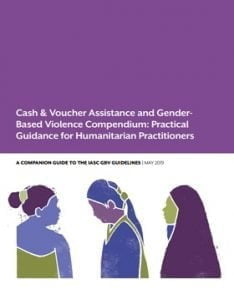 The Cash and Voucher Assistance and GBV Compendium (2019) helps humanitarian actors to integrate GBV risk mitigation and prevention into CVA; and integrate CVA into GBV prevention and response when appropriate. Available in Arabic, French, English, Spanish and Somali. The risk matrix is available in 20 languages.
The Cash and Voucher Assistance and GBV Compendium (2019) helps humanitarian actors to integrate GBV risk mitigation and prevention into CVA; and integrate CVA into GBV prevention and response when appropriate. Available in Arabic, French, English, Spanish and Somali. The risk matrix is available in 20 languages.
3.
With increasing amounts of information available, this document on Gender Equality and CVA: Tools and guidance (2020) gives an overview of some practical resources to integrate gender mainstreaming and gender equality in CVA.
4.
As a companion to the above, the Gender Based Violence and CVA: Tools and guidance (2020) document focuses on GBV and Intimate Partner Violence linked to CVA. It includes a comparative overview to help you quickly select the most suitable tools and guidance for your context and programmes.
5.
Drawing on three case studies, this report on Enablers and Gaps: Gender Equality, Gender-Based Violence Response and Mitigation in CVA at Response levels (2021) illustrates how Cash Working Groups, GBV Sub-Clusters, gender focal points and humanitarian partnerships can enable meaningful and wider engagement on gender equity and GBV response in CVA.
6.
We don’t do a lot for them specifically (2021) provides a wake-up call, focusing on the gaps and opportunities for improving the inclusion of people with diverse sexual orientations, gender identities, gender expressions and sex characteristics (SOGIESC) in CVA and social protection programmes. It flags that there are clear needs and asks why isn’t more being done?
Final words
And then, a bit of a cheat, CALP’s page on Gender and Inclusion has handy links to more resources and when you get those, there’s plenty more in the library!
Is there anything key missing from this reading list? If so please add them in the comments below, alongside any perspectives you’d like to share.
If you have any publications related to gender and CVA please do add them to CALP’s library.
Happy reading!
In the image: Community members in the Philippines (Isabela Province) enjoy themselves during a social mapping exercise. The Philippine Red Cross undertook this exercise in the wake of Typhoon Mangkhut and planned to unroll a series of response and recovery operations including cash transfers. Credit: MJ Evalarosa / IFRC. 16 October 2018.
